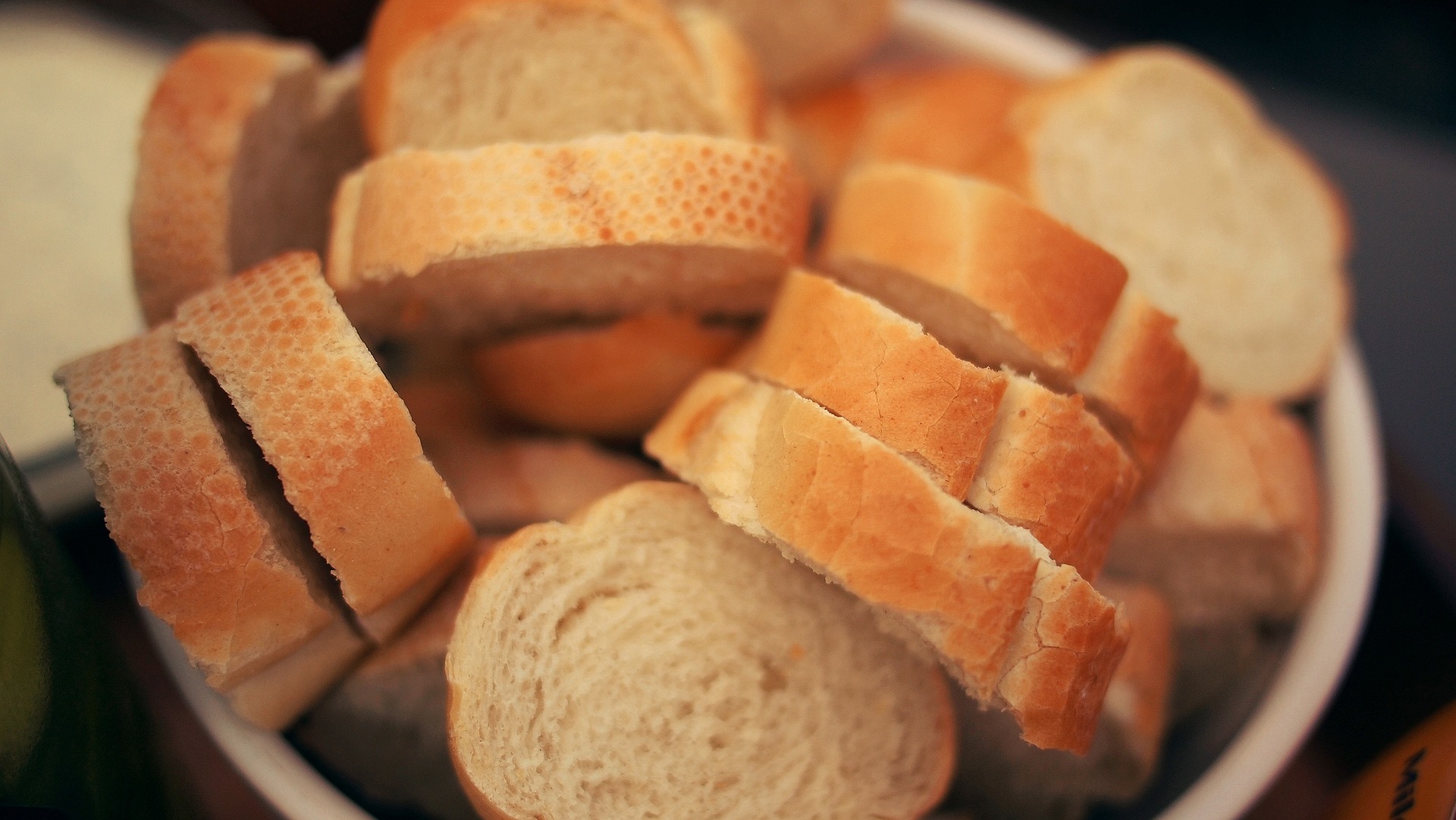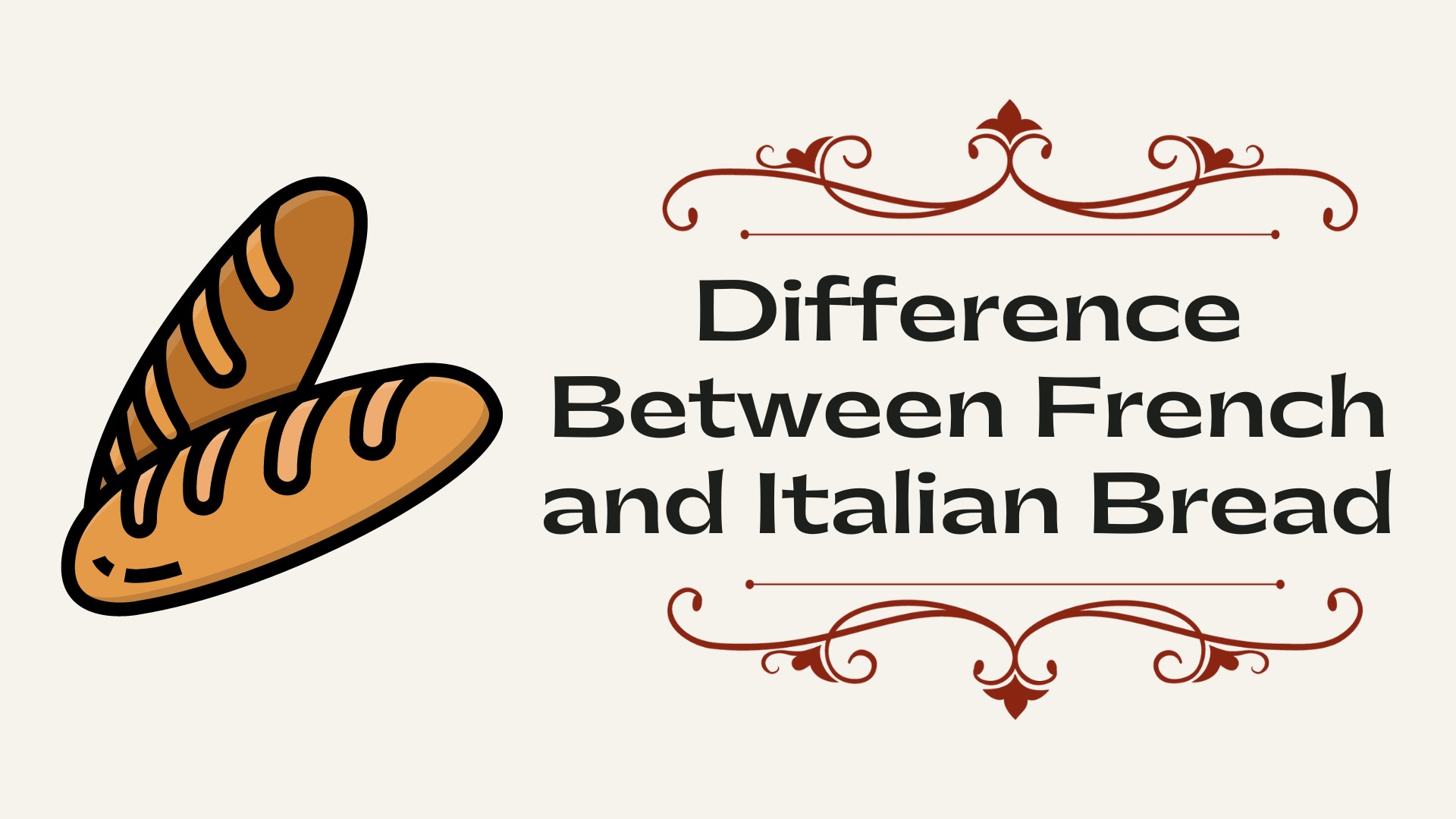Exploring The Difference Between French And Italian Bread: A Culinary Journey
When it comes to bread, few cuisines rival the artistry and tradition of French and Italian baking. Both countries boast centuries-old techniques and recipes that have shaped their distinct styles of bread. While French bread is often celebrated for its crusty exterior and airy interior, Italian bread is known for its soft texture and versatility. Understanding the difference between French and Italian bread goes beyond just taste—it’s about culture, history, and craftsmanship. Whether you’re a bread enthusiast or a curious foodie, diving into this topic will give you a deeper appreciation for these two iconic staples.
Bread is more than just a side dish in France and Italy—it’s a way of life. In France, the baguette reigns supreme, symbolizing simplicity and elegance. Meanwhile, Italy offers a wide variety of bread, from the rustic ciabatta to the sweet and savory focaccia. Each type reflects the region it comes from and the ingredients available, making the difference between French and Italian bread a fascinating study in contrasts. These differences are not just about flavor but also about texture, ingredients, and the methods used to bake them.
As we delve deeper into this topic, we’ll uncover what sets these breads apart and why they are beloved worldwide. Whether you’re planning to bake your own loaf or simply want to impress your friends with your bread knowledge, this article will guide you through the nuances of French and Italian bread. By the end, you’ll have a clear understanding of their unique characteristics and how they contribute to the culinary identities of their respective countries.
Read also:Discovering Kevin Beets A Journey Through His Life And Achievements
Table of Contents
- What Makes French Bread Unique?
- Why Is Italian Bread So Versatile?
- How Do the Ingredients Differ?
- What Are the Baking Techniques?
- Which Bread Is Healthier for You?
- How Do These Breads Compare in Taste and Texture?
- What Are the Regional Variations?
- How Can You Bake These Breads at Home?
What Makes French Bread Unique?
French bread is a testament to the art of minimalism. The French believe that simplicity is the ultimate sophistication, and this philosophy is evident in their bread. The most iconic French bread, the baguette, is made with just four ingredients: flour, water, yeast, and salt. This simplicity allows the quality of the ingredients to shine through, resulting in a loaf with a crisp, golden crust and a soft, airy interior.
One of the defining features of French bread is its crust. The baking process involves steam, which creates a thin, crackly layer that contrasts beautifully with the pillowy crumb inside. This technique is what sets French bread apart from many other types. Additionally, the long fermentation process enhances the flavor, giving the bread a subtle tang and depth that’s hard to replicate.
Why Is the Baguette So Iconic?
The baguette is more than just a type of bread—it’s a cultural symbol. Introduced in the early 20th century, the baguette quickly became a staple of French life. Its elongated shape and distinctive crust make it instantly recognizable. Whether it’s served with butter and jam for breakfast or used to make a sandwich, the baguette is a versatile and beloved part of French cuisine.
What Role Does French Bread Play in Daily Life?
In France, bread is an integral part of every meal. From breakfast to dinner, French bread is served alongside cheeses, soups, and main dishes. The French take immense pride in their bread, and bakeries are a cornerstone of every neighborhood. This cultural reverence for bread is one reason why French baking techniques have been preserved and passed down through generations.
Why Is Italian Bread So Versatile?
Italian bread, on the other hand, is all about variety. Unlike the uniformity of French bread, Italian bread comes in countless shapes, sizes, and flavors. From the chewy ciabatta to the soft and fluffy focaccia, Italian bread is designed to complement a wide range of dishes. This versatility is one of the key differences between French and Italian bread.
Italian bread often incorporates additional ingredients like olive oil, herbs, and even dried fruits. These additions not only enhance the flavor but also make the bread more adaptable to different cuisines. For example, focaccia is perfect for sandwiches, while ciabatta pairs beautifully with antipasto platters. The ability to customize Italian bread makes it a favorite among chefs and home cooks alike.
Read also:Discover Robie Uniacke A Journey Into His Life And Achievements
What Makes Italian Bread So Flavorful?
The secret to Italian bread’s flavor lies in its ingredients. High-quality olive oil is a staple in many Italian bread recipes, adding richness and depth. Herbs like rosemary, basil, and oregano are often used to infuse the bread with aromatic notes. These ingredients, combined with traditional baking methods, create a loaf that’s as flavorful as it is satisfying.
How Does Italian Bread Reflect Regional Diversity?
Italy’s diverse regions contribute to the wide variety of bread styles. For example, the northern regions favor softer, buttery bread, while the south is known for its crusty, rustic loaves. This regional diversity is a reflection of Italy’s rich culinary heritage and the availability of local ingredients. Exploring these differences is a delicious way to understand the country’s culture.
How Do the Ingredients Differ?
When comparing French and Italian bread, one of the most noticeable differences is the ingredients. French bread relies on simplicity, using only the essentials to achieve its signature texture and flavor. Italian bread, however, embraces a broader range of ingredients, incorporating fats, herbs, and spices to create a more complex taste profile.
For instance, French bread is typically made without fat, which contributes to its crisp crust and light interior. Italian bread, on the other hand, often includes olive oil, which softens the crumb and adds a rich flavor. This difference in ingredients is a key factor in the distinct textures and tastes of these two bread styles.
What Role Does Flour Play?
Flour is another area where French and Italian bread differ. French bread is usually made with high-protein flour, which provides the structure needed for its airy crumb. Italian bread, however, often uses lower-protein flour, resulting in a softer texture. The type of flour used can significantly impact the final product, making it an essential consideration for bakers.
What Are the Baking Techniques?
Baking techniques are another area where French and Italian bread diverge. French bakers rely heavily on steam to achieve the baguette’s iconic crust, while Italian bakers use a variety of methods to create their diverse range of breads. Understanding these techniques is key to appreciating the difference between French and Italian bread.
French baking often involves a long fermentation process, which enhances the flavor and texture of the bread. Italian bakers, on the other hand, may use shorter fermentation times and incorporate additional ingredients like olive oil to achieve their desired results. These techniques highlight the unique approaches each country takes to bread-making.
Which Bread Is Healthier for You?
When it comes to health, both French and Italian bread have their pros and cons. French bread is typically lower in fat due to its simple ingredient list, making it a lighter option. Italian bread, with its inclusion of olive oil and other ingredients, may offer additional health benefits, such as heart-healthy fats.
Ultimately, the healthiness of the bread depends on how it’s consumed. Pairing either type of bread with nutritious toppings like vegetables or lean proteins can make it a healthy addition to your diet. Moderation is key, as both French and Italian bread can be high in carbohydrates.
How Do These Breads Compare in Taste and Texture?
The taste and texture of French and Italian bread are where their differences truly shine. French bread is known for its crisp crust and airy interior, while Italian bread is softer and often infused with flavorful ingredients. These contrasts make each type of bread unique and suited to different culinary applications.
French bread’s subtle flavor makes it a perfect accompaniment to rich cheeses and charcuterie, while Italian bread’s versatility allows it to shine in everything from sandwiches to desserts. Whether you prefer the simplicity of French bread or the complexity of Italian bread, there’s no denying that both have their place in the culinary world.
What Are the Regional Variations?
Both France and Italy boast regional variations of their bread, reflecting the diversity of their landscapes and cultures. In France, the baguette is king, but regional specialties like pain de campagne and brioche offer unique twists. In Italy, bread styles vary widely, from the crusty loaves of Tuscany to the sweet panettone of Milan.
Exploring these regional variations is a delicious way to experience the culinary traditions of each country. Whether you’re sampling a rustic loaf in Provence or enjoying a slice of focaccia in Liguria, you’ll discover that bread is much more than just food—it’s a cultural experience.
How Can You Bake These Breads at Home?
Baking French and Italian bread at home may seem daunting, but with the right techniques, it’s entirely possible. Start by gathering high-quality ingredients and investing in a good oven. For French bread, focus on achieving the perfect crust by using steam during baking. For Italian bread, experiment with different ingredients like olive oil and herbs to create your desired flavor.
There are countless resources available online to guide you through the process. Websites like King Arthur Baking offer detailed recipes and tips for baking both French and Italian bread. With practice, you’ll be able to recreate the flavors of France and Italy in your own kitchen.
FAQs
What Is the Difference Between French and Italian Bread?
The difference between French and Italian bread lies in their ingredients, techniques, and textures. French bread is simple and crusty, while Italian bread is softer and more flavorful due to added ingredients like olive oil.
Can You Use French and Italian Bread Interchangeably?
While both types of bread can be used in similar ways, their textures and flavors make them better suited to specific dishes. French bread is ideal for sandwiches and pairing with cheese, while Italian bread works well in recipes requiring a softer texture.
Which Bread Is Easier to Bake at Home?
French bread may be easier for beginners due to its simple ingredient list, but Italian bread offers more room for creativity with added ingredients like herbs and olive oil.
Conclusion
Exploring the difference between French and Italian bread is a journey into the heart of two of the world’s most celebrated culinary traditions. Whether you’re drawn to the simplicity of French bread or the versatility of Italian bread, there’s no denying the artistry and passion that go into each loaf. By understanding their unique characteristics, you can deepen your appreciation for these iconic staples and bring a taste of France and Italy into your own home.
Axolotl Plural: Discover The Fascinating World Of These Unique Aquatic Creatures
Discover The Transformative Power Of Differin: Before And After Results
How Often Should You Use Purple Or Blue Shampoo: A Complete Guide

Difference between French bread and Italian bread

Difference Between French and Italian Bread KitchenThinker